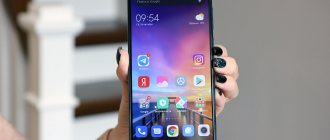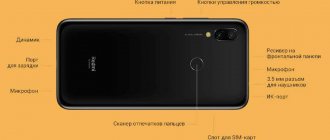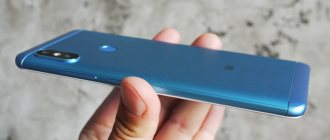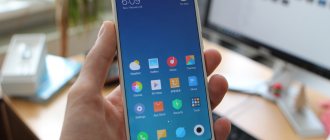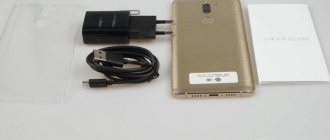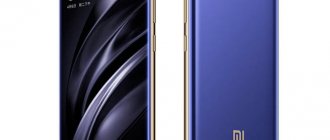Recently, Xiaomi has made it a rule to release a whole range of smartphones in one line, which can be quite confusing for the end buyer. If earlier, unlike the Red Mi line, the Note line was distinguished by a larger display diagonal and more powerful hardware, then with the release of the new budget 5A series everything has changed a little.
At the moment the division looks like this:
- Xiaomi Redmi (from 1 series to 4) - 5″ budget smartphones with HD resolution and a powerful battery.
- Xiaomi Redmi Note (from 1 series to 4) - 5.5″ smartphones with FHD resolution, a powerful battery and a good CPU.
- Index A - means a simplified version of the smartphone.
- Index X - version for the Chinese market
- Global Version - international version of the smartphone (CE certification, packaging in English, Euro charger, Google Play, etc.)
Starting with the fifth series, Xiaomi has released a new line of Redmi 5 Plus smartphones, which received radical changes in size from 5″ to 5.7-5.9″ and changed the screen resolution from HD+ to FullHD+.
In addition, smartphones with the index “X” were released, which meant that these smartphones were released for the Chinese market. Confused yet? And a little later, versions of X Global were released - an export version... Add here smartphones for the Indian market, Taiwanese market, UK version, etc. Overall it turns out quite chaotic.
Regardless of the version, the smartphone is available on the market in three colors: Gold, Gray and Pink Gold.
There are two modifications of the smartphone. The younger version received a 5.5″ display with HD resolution, a quad-core Snapdragon 425 processor with 2GB of RAM and 16GB of internal memory. The older version has more noticeable improvements. The size and resolution of the display remained the same, but the processor was updated to an 8-core Snapdragon 435, the amount of RAM was increased to 3GB and the internal memory was increased to 32GB. In addition, they added a fingerprint scanner to the rear panel and installed more powerful cameras: the front camera received a 13MP sensor and the main one - 16MP.
The cost of the 2/16GB version in online stores ranges from $85-100, but for the older version 3/32GB they ask for $115-$135.
Characteristics :
| Model: | Xiaomi Redmi Note 5A |
| Display: | 5.5″ with HD resolution, brightness 450 nit, 2.5D. |
| CPU: | 8-core Snapdragon 435 |
| Graphics accelerator: | Adreno 505 |
| Memory: | RAM: 2/3GB ROM: 16/32GB *microSD - full microSD slot |
| Battery: | 3080 mAh |
| Camera: | Main: 13MP Front: 5MP |
| Additionally: | Wi-Fi (802.11 a/b/g/n; 2.4GHz/5GHz), Bluetooth 4.0 + LE |
| Net: | Dual-Sim(Nano-SIM) GSM B2/B3/B5/B8 WCDMA B1/B2/B5/B8 TD-SCDMA B34/B39 CDMA2000/1X BC0 Fdiv-LTE B1/B3/B5/B7/B8 TD-LTE B34 /B38/B39/B40/B41(2555-2655MHz) |
| Dimensions: | 153 x 76 x 7.7 mm |
| Weight: | 153 grams |
There wasn’t much point in considering the older version of the smartphone because of the price and competitors, but I really wanted to look at the Xiaomi Redmi Note 5A 2GB in the <$90 segment.
Package
The smartphone comes in a bright red package. Gone are the days when Xiaomi used thick brown packaging made from recycled paper. Due to the fact that this is an international version, all descriptions on the back cover of the smartphone are in English, not Chinese. This is of course a small thing, but nice.
Comparison of designs
The phones are made in the classic design of the Xiaomi company: the body has rounded corners and is made entirely of plastic. Although from a distance it seems that the Note version is made of metal. However, the level of manufacturing is quite high: the plastic does not creak anywhere, there are no gaps or cracks.
It is not difficult to distinguish gadgets from each other, because the simple “Five” is equipped with a five-inch display, and its modification is already equipped with a five and a half inch screen.
Among the visual differences, it is worth noting the placement on the “Five A” model of a speaker on the back cover, made in the form of a mesh. On the Note it is located on the bottom edge.
The buttons responsible for changing the volume and turning on are equipped in the usual place - on the right side. Also in the usual place (top edge) are an IR port, a 3.5 mm audio jack and a microphone. On the back cover you can find photo modules and a flash.
On the left side there are slots for installing a SIM card and external memory. The difference is that the Redmi Note 5A uses a long tray where two SIM cards and a memory card can be placed at the same time, while the base model has two separate slots - for SIM cards and external media.
Equipment
The smartphone received standard equipment:
- Smartphone
- Charger
- USB cable
- Instructions
- Paper clip (sim extractor)
In the new line of Redmi 5 Plus smartphones, the manufacturer additionally adds a proprietary silicone case. Unfortunately, the budget Redmi Note 5a line does not provide any additional accessories.
One of the many differences between the regular version and the Global version is the presence of English instructions, instead of the usual Chinese.
Design and ergonomics
The smartphone comes in a compact red and white box. Everything inside is modest: a 5V/1A power supply, a USB cable, a paperclip for removing the tray.
Externally, the smartphone can be called partly faceless; its appearance is fully consistent with its budget positioning. Neat rounded corners and stripes on the back panel create a strong association with you know what kind of phone. The body of the Xiaomi Redmi Note 5A pretends to be metal, but in fact it is plastic, which the manufacturer casually mentions on its website. The frames around the smartphone's display are small, making the device easy to grip when using with one hand. The buttons are located on the right side, are clearly visible blindly, and have a short stroke. The left side is empty, there is only a built-in tray for a pair of SIM cards and a memory card. Finally, we have three full-fledged slots and no longer have to choose between a second SIM card and memory expansion. This point immediately makes it pointless to overpay for the version of Xiaomi Redmi Note 5A with 32 GB of memory. It would be wiser to increase the volume with a card.
On the top edge, in addition to the second microphone and 3.5 mm jack, there was an IR port, which is especially nice considering the budget of the device. It helps me control a couple of TVs at home and an office air conditioner.
On the bottom edge, under two grilles, a conversational microphone and a multimedia speaker are hidden.
The latter is quite loud and does not suffer from wheezing at high volume levels. But the microphone in my copy really let me down. My interlocutors complain that they can’t hear me at all, and my voice sounds like it’s coming out of a bucket. Either Xiaomi was greedy with the microphone, or I got an unsuccessful device. There is no fingerprint scanner in my version. To overpay for it or not is a good question. If you increase your budget for purchasing a smartphone, I would look towards a full-fledged line - without the “A” index - with more advanced hardware.
The buttons under the display are not backlit, but after a week of getting used to it, they can be found in the dark without any problems. The smartphone is available in three colors: gray, gold and pink.
Charger
Another difference between the Global version and the Chinese one is the presence of a Euro charger out of the box. Thus, you completely get rid of the headache of searching for an adapter. The charger is the simplest, there is no question of any support for Quick Charge - 5V / 1000 mA. By the way, the smartphone does not support fast charging technology in any case. To fully charge the battery it will take a little less than three hours.
Memory and memory card
Xiaomi Redmi Note 5A has 16 gigabytes of storage and 2 gigabytes of RAM. Today there is still enough of it, but in such a situation there is no talk of any reserve for the future. Xiaomi, of course, deliberately saved on memory in the cheapest version, which only further emphasizes its budget. Nevertheless, smartphones with the Prime prefix are equipped with 3 gigabytes of RAM and 32 gigabytes of main memory, which is already a very good indicator. In addition, you can take a closer look at the top-end version of this device with 4 and 64 gigabytes of RAM and main memory, respectively.
Also, each of the smartphones supports micro-SD memory cards up to 128 gigabytes. As we said earlier at the beginning of the article, the Redmi Note 5A tray for SIM cards and memory cards is not a hybrid one. You won't have to choose between a memory card and a second SIM card, so the small amount of main memory is not at all the weak point of this smartphone.
Appearance
The front panel has a camera, a hearing speaker, light and proximity sensors, an LED notification indicator, as well as touch keys.
Regardless of the version, the touch keys are not backlit. In this case, Xiaomi actually saved a few cents... But was it worth it?
At the top end there is a 3.5mm headset jack, a noise-canceling microphone and an infrared port, which all Xiaomi users are so accustomed to.
On the right are the volume buttons and the power button for the smartphone.
On the left side there is a SIM tray and nothing more. For the first time, Xiaomi has introduced a 3-slot slot. Thus, the user no longer has to combine 2 SIM cards or 1 SIM card and a memory expansion card. In Redmi Note 5a you can easily use two SIM cards (there is still only one radio module) and a memory expansion card up to 128GB.
At the bottom end there is an external speaker, microphone and micro-USB port for charging a smartphone or connecting a USB flash drive.
Even flagship devices did not receive stereo speakers. I don’t think it’s worth clarifying that Redmi Note 5a was no exception.
It may seem that the smartphone body is made of metal, but this is not so. The back panel is made of plastic with a metal finish and a metal frame. The volume buttons and the On/Off button are made of plastic. Despite all the budget materials, the build quality is at a high level and the user does not feel like using a $30 smartphone.
News / Xiaomi Redmi Note 5A
Smartphones from the Chinese company with the unpronounceable name Xiaomi have long won recognition among lovers of inexpensive devices. The manufacturer relied on a combination of technical innovations, reasonable price and quality, which led to success. The popular budget fourth series is being replaced by the fifth series of Redmi smartphones, one of the representatives of which is the Note 5A. As the manufacturer promises, the screen will now be brighter and larger, the camera will be better, and charging will be faster.
At the moment, there are two main versions of the smartphone: simple and premium, with the word Prime added to the name, the main difference of which is the larger volumes of permanent and RAM memory compared to regular ones.
The Snapdragon 425 processor installed in the simple version of the smartphone does not have outstanding performance: a low, by modern standards, 1.4 GHz frequency of only four 64-bit Cortex A53 cores, combined with an Adreno 308 graphics accelerator. Expect a processor from a device in the low price segment It's not worth it from the older price line.
The smartphone's memory also does not break records: 16 GB of storage and 2 GB of RAM (32 and 3 GB in the premium version). You can expand the memory capacity with removable cards up to 128 GB.
The performance of a smartphone is determined not only by the presence of a large amount of memory and a powerful multi-core processor. Their correct interaction, implemented using a software shell, is also important. Xiaomi is not doing badly with this, because Android in combination with MIUI 9 shows good results in most everyday tasks that do not require high frequencies and accelerated data exchange.
Contents of delivery
The device comes to the owner in a branded box made of thick cardboard, which contains, in addition to the smartphone itself: • detailed user instructions; • traditional paperclip for opening the SIM card tray; • cable for fast charging; • Charger.
A modest kit, although sufficient for use. Protective glass, case, and headphones will have to be purchased separately.
Description of the smartphone
The case, although it looks metal, actually is not. The back cover is plastic with a camera eye (13 megapixels) and a flash.
The screen is covered with glass with an oleophobic coating applied, which is quite high quality. Below the screen are the touch control buttons characteristic of the Redmi line. A 5 MP camera (front), a grilled speaker, and a backlit notification indicator are located above the screen.
The power button is located on the right side of the smartphone, and there is also a volume button. A tray with three sections for connecting SIM cards (micro and nanoSim format) and adding a memory card are located on the left side.
On the bottom edge there is a connector for data transfer and connecting a charger. There is also an external speaker and microphone.
An infrared port, a standard headset jack and an additional microphone are located on the top edge.
The impression upon inspection is positive. All edges and surfaces are processed quite well, the paint is applied evenly and evenly, there is no rattling of individual parts.
Ergonomics are excellent: the smartphone lies comfortably in the hand due to its rounded edges and thin body.
Dimensions and weight
Overall dimensions of Note 5A: • Height – 153.5 mm; • Width – 76.2 mm; • Thickness – 7.6 mm. The weight of the device is 150 grams, which is not surprising considering the material used to make the case.
Battery
The battery, like all devices in the Redmi line, is non-removable. The battery capacity is 3080 mAh, which is quite modest. With not very active use, the charge is enough for a day. Also, the small power reserve is compensated by the presence of fast charging and proprietary battery-saving functions of the Xiaomi shell.
Screen
The display module uses an IPS matrix with a resolution of 1280x720 and a diagonal of 5.5” (HD). The quality of the displayed image is at a high level: there are no distortions, incorrect displays of individual elements, or strong angular disproportions.
The brightness is adjustable in a range sufficient for comfortable use: from the minimum, which does not create a strong load when used in the dark, to the maximum, which does not cause problems in bright daylight. Readers can use the reading mode to reduce the effect of harmful blue light on the eyes.
Sound
The built-in speaker is quite loud, notification sounds and calls can be heard perfectly. But to listen to music, it is better to use high-quality headphones; the sound will be much better, and it may even pleasantly surprise a not too picky user.
Performance
Most simple tasks, such as communication, surfing the Internet, listening to music tracks, watching videos, are performed by a smartphone at a fairly comfortable level. Even in simple games that do not require much processor voltage and a large amount of RAM, the user will not experience disappointment.
Graphically complex games will, of course, only run on low settings. The budget segment, you shouldn’t expect feats from it.
Camera
Despite the low cost of the smartphone, the manufacturer has equipped it with a fairly high-quality main camera. In daylight, the correct exposure is maintained, the pictures are detailed, saturated with very good detail and correct color reproduction.
Even in low light conditions, the camera module is not inferior in the quality of the resulting images to solutions from a completely different price segment. The camera in Redmi 5A is very good for its price.
Additional features
Gyroscope and accelerometer. They control the positioning of the device in space. Used in games and utility applications.
Electronic compass. Allows the user to navigate in space when navigating the terrain.
Light control. Allows you to automatically adjust screen lighting depending on your surroundings. Convenient when using a smartphone at different times of the day and in different lighting conditions.
Infrared port. Allows you to control household and electronic equipment in the house (TVs, set-top boxes, projectors, stereo systems, air conditioners). In the settings, you can select the desired device from a list of preset profiles and easily pair with it in a few simple steps. After this, the smartphone will turn into a kind of universal remote control that is always at hand.
Xiaomi's smartphone turned out to be quite successful, a worthy successor to the Redmi line. Bright screen of fairly good quality, acceptable sound, ergonomic body, very good main camera. And at the same time – low cost.
Display
Instead of the usual FullHD resolution in the Note line, the smartphone received HD resolution. The difference in resolution with such a diagonal is immediately noticeable, but do not forget about the budget. Nobody promised 2K resolution for $100. Don't be alarmed. There is no talk of any pixelation. The display supports up to 10 touches simultaneously.
The richness and brightness of the display is more than enough for comfortable use even in the sun. Chinese companies have long stopped playing roulette and installing TN matrices with terrible viewing angles.
The IPS display in a smartphone makes every cent its worth and only at too large viewing angles can it give off a slight blue tint, but you are unlikely to use the smartphone at an angle.
Only in the last photos can you see a slight color distortion.
Camera
The main camera is represented by a 13MP sensor from Samsung and a single-LED flash. The front one received only a 5MP sensor.
In good lighting (daylight), you get quite good and juicy pictures. If there is not enough light source, then problems begin (blurry photos, noise, etc.). You'll still see noise when you zoom in, but the camera is pretty good for the money.
When buying a budget smartphone, it is foolish to expect image quality as in professional cameras. Therefore, the results of the pictures were quite expected (especially since Xiaomi’s camera has always been a weak point).
GPS
The cold start took about 1.5-2 minutes, the smartphone found 18 satellites, but only used 10. Navigation in Google Maps was not satisfactory.
Autonomy
A 3080 mAh battery is responsible for the autonomy of the smartphone. I would like to see the good old 4000 mAh, which we are used to seeing in the Note line, but, as tests have shown, even 3080 mAh is quite enough.
Watching an online video over Wi-Fi could drain the battery completely only after 9 hours 30 minutes. Brightness is set to 50%, SIM card is disabled. In other words, 9.5 hours of active display!
As for normal use, the Redmi Note 5a showed the following results - 1 day and 7 hours of battery life.
Of these, 7 hours 47 minutes of active screen, approximately 130 minutes of web surfing, 24 minutes of calls, about 1 hour of games, photos, GPS. With a 3080mAh battery, a very good result!
Performance
Xiaomi Redmi Note 5A is powered by the same processor as Redmi 4X. This is an 8-core Snapdragon 435 with Cortex-A53 cores on a 28 nm process technology.
AnTuTu
The AnTuTu benchmark examines all aspects of a smartphone's operation. Judging by the results, this is a typical smartphone in the lower price category. At least the operating speed is higher than on the MediaTek P10 processor for the same smartphones.
Geekbench 4
Geekbench 4 looks at single-core and multi-core performance. You can also test the graphics system here. Single-core testing shows the advantages and disadvantages of the processor architecture, the second test demonstrates the optimization of the simultaneous operation of multiple cores.
Here the comparison is made with smartphones powered by MediaTek P10 and Kirin 650 processors.
GFXBench
The GFXBench test shows graphics performance with the screen on and off.
PCMark
The PCMark large-scale test shows the overall software performance and behavior of the smartphone in everyday use.
Androbench
The Androbench benchmark measures performance when reading and writing data.
Among the games reviewed was King of Glory, where the frame rate was mostly at 25 fps, sometimes dropping to 20 fps.
This review considers a smartphone version with Chinese firmware that does not have Google services. MIUI 8.5 shell was installed on top of Android 7.1. If you have already worked with Xiaomi smartphones, you will feel right at home. The appearance, functionality, and settings options remain unchanged.
Even after installing many applications, the device works quickly and responsively. This shell is known for its clean interface, but appearances can be deceiving. It offers many customization options and advanced system tools. Supports multi-window operation, quick responses to notifications, smart application loader, image search.
The machine learning mechanism helps in the work. RAM management has been improved, system resources are consumed less, and improvements have been made to the power saving mode. Shortcuts to all installed applications and widgets go directly to the home screen. The most frequently used applications can be placed in the dock at the bottom. The notification panel opens from the top and traditionally has quick toggles.
The app switcher is similar to iOS. Programs are displayed as thumbnails in the same manner, but there is an additional button for split-screen mode. Here you can run two applications side by side. All pre-installed programs and a significant part of third-party programs support this feature.
Graphic themes are also supported. You can download additional wallpapers, lock screens, icons, fonts and sounds.
The security offer scans the smartphone for viruses, manages the blacklist, limits traffic consumption, adjusts power consumption and frees up RAM. Here permissions are given and restrictions on their work are set.
Games
Modern Combat 5
NFS
Three games were tested: Modern Combat, NeedForSpeed, World Of Tanks - naturally, the graphics quality was automatically set to low settings. If the game ran smoothly in WoT and NFS, then in Modern Combat there was a lack of FPS. Less resource-intensive games run without problems.
Testing
The Snapdragon 425 processor can hardly be called productive. This is the most budget 64-bit processor on the market at the moment. The CPU is equipped with 4 Cortex-A53 cores with a clock speed of up to 1.4 GHz. The graphics accelerator is the no less budget GPU Adreno 308.
General characteristics
Visually, the Xiaomi Redmi Note 5A Prime smartphone is similar to the IPhone 6S Plus - both in shape and size. Its display has a diagonal of 5.5 inches.
The phone's screen is exactly the same as that of competitors from the budget category. It has an IPS matrix and a resolution of 720 pixels. HD resolution is enough to view content and work with the phone without any difficulties in perception.
The device body is made of impact-resistant plastic. The front panel is covered with tempered Gorilla Glass 3, allowing it to withstand significant damage from falls and everything that comes with it. The practice of several weeks of use has shown that the appearance of the device does not lose its attractive qualities at all. This may appeal to those who carry their phone without a case.
Internal hardware allows you to achieve maximum levels of performance without sacrificing resources. When disassembling the device, several facts about the technical equipment of the phone can be clearly identified, namely:
- The phone supports networks of all available formats, namely 2G, 3G and 4G.
- The phone from the budget segment has a fairly powerful processor with a clock frequency of 1.4 GHz Cortex-A53. It has a built-in graphics core that allows you to display images in native resolution in fairly good quality. As a rule, the Cortex-A53 processor is not well suited for devices with screens from FULL HD and higher. There, phones stop working or crash, making it difficult to use. At a lower resolution, the devices work as they should, which prompted the developers to leave the screen with a resolution of 720p, thereby reducing the cost of the finished product and making it much more productive.
- As for the internal memory, it can be in two versions depending on the modification of the device. If we take the youngest (basic) version of the phone, then the ROM has a capacity of 32 GB. In the older version, the internal storage is designed to store 64 gigabytes of information, which is quite impressive. This state of affairs at Xiaomi allows it to compete with Apple by making memory much cheaper than its competitors.
- The RAM of the device also depends on the modification. Devices with 32 GB ROM are available with 3 gigs of RAM; if the storage is 64 GB, then the RAM is 4 GB. These are quite good numbers for a mobile device in 2020.
- The phone has all the interfaces such as GPS, Wi-Fi and Bluetooth. The phone supports microSD memory expansion cards up to 256 GB, which allows you to save on buying a more expensive smartphone: you can simply buy a memory card and insert it to increase storage. As for the indispensable payment assistant - the NFC module - it is missing here. The developers made it clear that this module cannot yet be available in the budget segment of smart phones.
- The phone's cameras are good: the front one is 16 megapixels, and the main one is 13 megapixels. This is one of the few cases where the front-facing camera is superior in performance to the main one.
- Xiaomi Redmi Note 5A Prime has the following sensors: “Accelerometer”, “Gyroscope”, “Lighting and proximity”, “Compass”, “Fingerprint scanner”.
- The battery in the device is non-removable with a capacity of 3080 mAh.
Considering that we are talking about a budget smartphone, its characteristics are quite worthy of attention.
AnTuTu Benchmark
In the AnTuTu test, Redmi Note 5a scored 44118 points. Quite a mediocre result in 2020, but as practice has shown, the Snapdragon 435 fully coped with the tasks assigned to it.
GeekBench
In Geekbench, the Note 5a scored 681 points in the single-core test and 1896 points in the multi-core test.
Screen
It has an IPS matrix, as stated a few paragraphs above. The 720p resolution makes the screen dimmer, and the new matrix saves the user’s perception from negativity, thereby elevating the image to the proper level. If you compare the image of Redmi Note 5A Prime with products, for example, from Apple, then naturally the colors will be dull, because the resolution does not allow displaying a good image on the screen of a budget phone.
If the user ignores the expensive representatives of smartphones, then the screen of the Redmi Note 5A Prime will be quite attractive, although far from ideal. Budget hardware simply would not be able to achieve higher resolution with a similar matrix manufacturing technology.
PCMark
OS
The operating system is Android 7.1.2 with proprietary firmware MIUI Gboal 9.2. As mentioned above, despite the ultra-budget processor, the system works very quickly. At certain points, the limitation of 2GB of RAM has an effect (applications are unloaded), but in general, as for a budget smartphone, everything is very good.
Another advantage of the Global version is the hassle-free updating of the smartphone and the presence of Russian/Ukrainian language out of the box. You don't have to wait for permission to unlock your bootloader.
Conclusion
If you are looking for a gaming smartphone, then the Xiaomi Redmi Note 5a is not for you. If you are looking for a smartphone with a good camera, then the Xiaomi Redmi Note 5a is not for you. In all other respects, this is just an excellent smartphone for the money.
For $90 you get a full-fledged dual-SIM smartphone with memory card support, excellent battery life (let me remind you that when watching a movie online, the smartphone’s battery ran out after 9.5 hours), a good juicy display and a guaranteed firmware update.
All this applies exclusively to the younger version, since for the price of the Note 5a 3/32GB you can look at a much more interesting smartphone.
Design
Let us finally move on to the appearance of our hero, because there is something to discuss here.
The first thing that catches your eye and what is difficult to come to terms with in the future is the side frames. They are huge here. And this is in 2017! And the same manufacturer presented Mi MIX 2 a couple of months ago - it’s all frameless. It's hard to believe.
Yes, I understand that you can’t demand much from a budget phone, but the Redmi 4A, which is already more than a year old, looked neater.
In general, Xiaomi scored on the design of Redmi Note 5A.
By the way, this approach is manifested in other details.
Plastic case, for example. Less well-known Chinese have long been installing metal cases in their creations, even for $100. And Xaiomi is still waiting for weather by the sea.
Another point - Micro USB. In 2020. A smartphone from almost the most innovative company in China. Well, how can this be?
I also cannot praise the device for its absolutely flat protective glass. Again, I’ll use as an example other Chinese brands (Oukitel, Vernee, UMIDIGI), which manage to insert 2.5D glass into devices for 60-80 dollars. And Xiaomi is apparently lazy.
| Length | Width | Thickness | Weight | |
| Xiaomi Redmi 5A (5'') | 140,4 | 70,1 | 8,35 | 137 |
| Xiaomi Redmi Note 5A (5.5'') | 153 | 76,2 | 7,55 | 150 |
| Xiaomi Redmi Note 5A (5.5'') with fingerprint scanner | 153 | 76,2 | 7,7 | 153 |
On the other hand, I was carried away and, perhaps, I am finding fault. I find fault with a smartphone that costs $100.
If we omit all these nuances, the smartphone is perceived absolutely calmly. The design does not cause any delight, but there is no disgust either. The assembly is good, high quality is the most important thing.
PS Touch keys are located under the screen. They are not backlit. Let’s not be impudent, the device is already inexpensive.

